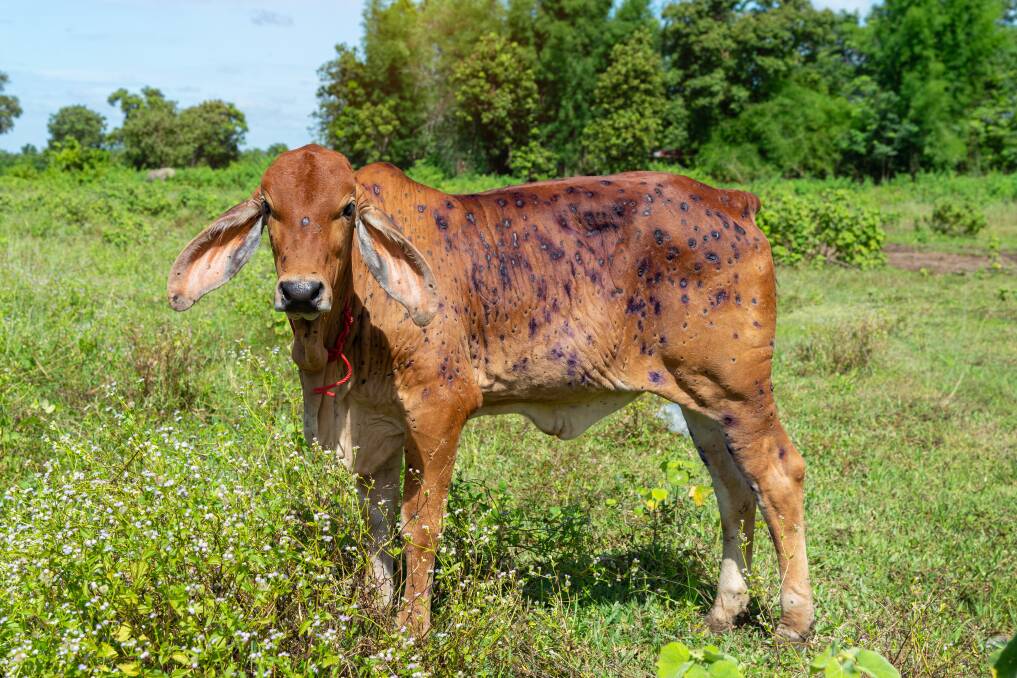
THE past 12 months haven't been easy for the State's livestock industry, with biosecurity threats lingering on Australia's doorstep in Indonesia and the new Federal government's proposal to phase out live export hanging over the sector like a dark cloud.
Subscribe now for unlimited access to all our agricultural news
across the nation
or signup to continue reading
Cattle Council Australia chief executive John McGoverne said outbreaks of foot and mouth disease (FMD) and lumpy skin disease (LSD) in Indonesia were an ever-increasing threat to Australia's livestock sector.
He said the council had encouraged the government to put more resources in place in Northern Australia, to help deal with any possible incursions of either disease.
"A few years ago the government put out an assessment that said there was a 40 per cent chance that an incursion in Australia would severely impact the livestock sector within the next five years," Mr McGoverne said.
"Worst case scenario at the moment is that we would lose 95pc of our export markets and about 70pc of boxed beef - so those threats are significant and we need to look at how we manage and build our capability and capacity to deal with those.
"Fundamental to that is going to be a robust tracing capability system - I can't emphasise that enough."
Thomas Elder Markets co-manager Matthew Dagleish said despite the challenges facing the livestock industry, Australia and New Zealand were still the biggest players in the export space of sheep meat, accounting for about 70pc of global exports combined.
READ MORE
"Traditionally New Zealand used to dominate it, but in about 2015 Australia started to take the lead in terms of the volumes sent export-wise," Mr Dagleish said.
"Australian producers sit at about 40pc of exports globally and the Kiwis are about 30pc, but New Zealand has been reducing their sheep flock over the past decade."
Mr Dagleish said the new trade environment being negotiated with India was also a huge opportunity for Australia's sheep meat export industry, while the United States also had elevated flows of Australia's lamb exports since mid last year.
"Over the whole year it was about 25pc above the five-year trend, and then we started particularly strongly this year in the past few months," Mr Dagleish said.
"We're sitting at about 45pc above the five-year trend for lamb exports going to the US.
"Because the US consumer doesn't eat a lot of lamb as part of their meat diet, there are still a lot of growth opportunities in that market too."
Mr Dagleish said the results of a 2018 survey on the live sheep sector by Thomas Elder Markets showed a significant amount of the participants' revenue each year had been derived from the live export sector.
However this was before Australia's live exporters self-imposed a moratorium to manage the risk of heat stress during the northern summer in 2019, which was later mandated and extended by the regulator.
"Since the moratorium, volumes from the South East have shrunk significantly, so in the past three or four years now, about 98pc or more leaving Australia have left from WA," Mr Dagleish said.
"If you look back at pre-moratorium times, about 30pc of WA's turnoff was going into the live sheep trade - that reduced to about 20pc through the first few years of the moratorium and as of the past two years has dropped to about 12pc.
"Having reduced opportunity to turn off your animals does concern me if we see this move to a phase out of the sector - I have significant concerns about how that is going to play out for the Western Australian producer, but also for the supply chain.
"If we get out of the game you are going to have other people who are going to come and step in to what we do, but they are going to do it much more poorly."

